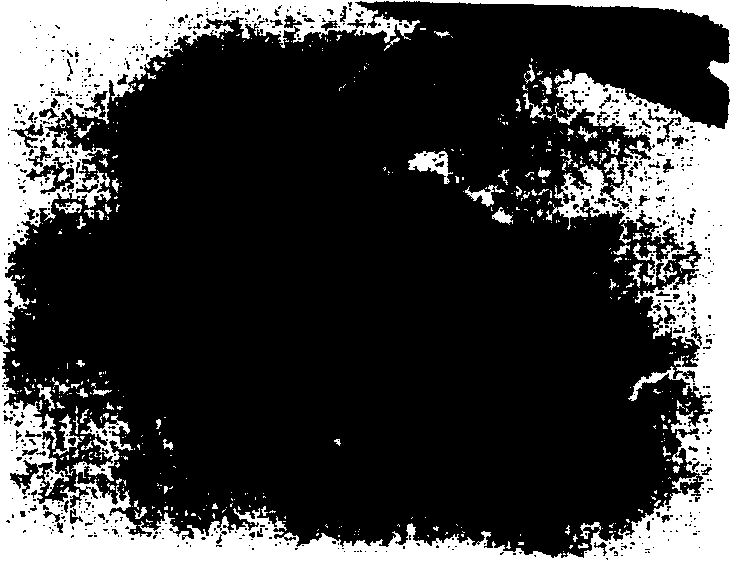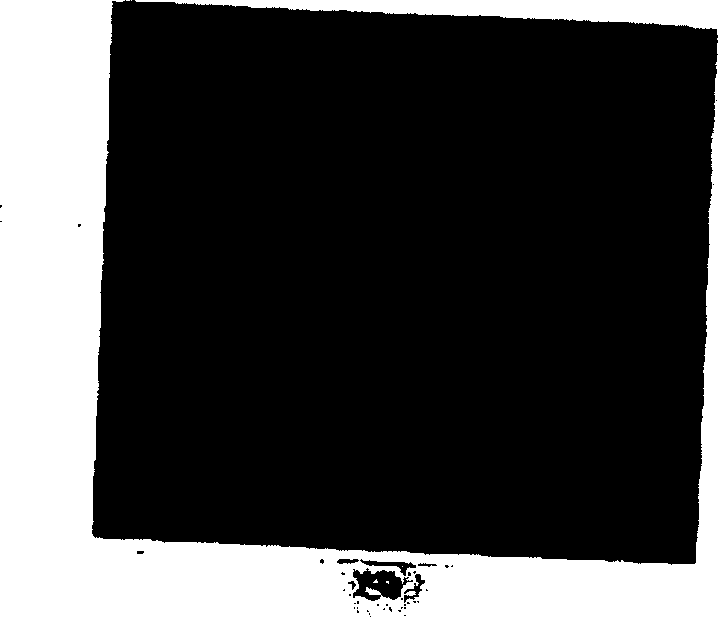One-step method for producing micro-budlet through tee leaves
A technology for tea leaves and buds, which is applied in the field of one-step method for producing microscopic buds from tea leaves, and can solve problems such as failure to obtain morphogenesis or formation of unshaped buds, and no root formation.
- Summary
- Abstract
- Description
- Claims
- Application Information
AI Technical Summary
Problems solved by technology
Method used
Image
Examples
Embodiment 1
[0059] When at 25±2℃ and 52μmolm -2 the s -1 Cold fluorescent 16 hours light will be placed in supplemented with vitamins such as vitamin B 1 -HCl (0.05-2.0mg / l), vitamin B 6-HCl (0.25-1.5mg / ml) and niacin (0.25-1.5mg / l) with glycine (1.0-3.0mg / l) and 2.5-10mg / l of 2,4-dichlorophenoxyacetic acid (pH 5.6 ±0.2) (0.8-1.0%) agar-solidified basic Murashige and Skoog medium (Murashige T. and Skoog F.A. Improved medium for rapid growth and bioassays in tobacco tissue culture, Physiol. Plant 15:473-497; 1962) at 10-16 weeks in in vitro cultured plants of any of the important cultivars (Chinaary, Assamica and Cambod) with fully folded, semi-open or fully expanded leaves. sex explants. 1-2 weeks after the start of the culture, the callus was supplemented with vitamins such as vitamin B 1 -HCl (0.05-2.0mg / l), vitamin B 6 -Basic of HCl (025-1.5mg / ml) and Niacin (0.25-1.5mg / l) with Glycine (1.0-3.0mg / l) and 2,4-dichlorophenoxyacetic acid (2.5-10mg / l) Developed in Murashige and Skoog...
Embodiment 2
[0061] Complete folding with 50-year-old selected plants of any important cultivar (China, Assamica and Cambod) from Himalayan Bioresource Technology Experimental Farm Institute, Banuri, Palampur (36°N and 78.18°E and sea level above 1290m) Leaves from open, semi-open or fully-open leaf explants (second and third leaves from the tip of young shoots) were used as explants. The leaves were washed thoroughly with a brush made of sable hair and liquid detergent, washed in Tween 20 containing (0.1%) carbendazim and (0.05%) streptomycin and washed in 0.01 % mercuric chloride solution followed by a thorough rinse in distilled water. The sterilized explants were cultured similarly to every detail in the method described above.
Embodiment 3
[0063] At 25±2℃ temperature and 52μmolm -2 the s -1 Leaves of fully folded, half-open or fully-open leaf explants of in vitro cultured plants of other hybrid cultivars were placed in a place supplemented with vitamins such as vitamin B 1 -HCl (0.05-2.0mg / l), vitamin B 6 -HCl (0.25-1.5mg / ml) and niacin (0.25-1.5mg / l) with glycine (1.0-3.0mg / l) and 2.5-10mg / l of 2,4-dichlorophenoxyacetic acid (pH 5.6 ±0.2) (0.8-1.0%) agar-solidified basic Murashige and Skoog medium (Murashige T. and Skoog F.A, Improved medium for rapid growth and bioassays in tobacco tissue culture, "Plant Physiology" (Physiol. Plant ) 15:473-497; 1962) in order to develop callus, after 1-2 weeks, take root after 4-6 weeks in the same medium, and shoots after 4-6 weeks. The shoots thus formed were transferred to a propagation medium containing a liquid medium supplemented with 5 μm of phenylthiadiazolyl urea (Sandal I. Bhattacharya A. and Ahuja P.S. 2001, The High-efficiency liquid culture system, plant cell...
PUM
 Login to View More
Login to View More Abstract
Description
Claims
Application Information
 Login to View More
Login to View More - R&D
- Intellectual Property
- Life Sciences
- Materials
- Tech Scout
- Unparalleled Data Quality
- Higher Quality Content
- 60% Fewer Hallucinations
Browse by: Latest US Patents, China's latest patents, Technical Efficacy Thesaurus, Application Domain, Technology Topic, Popular Technical Reports.
© 2025 PatSnap. All rights reserved.Legal|Privacy policy|Modern Slavery Act Transparency Statement|Sitemap|About US| Contact US: help@patsnap.com



